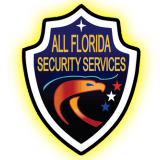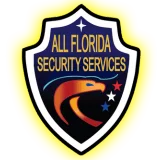Night security patrols are extremely important to protect people, properties and assets. A well-organized night patrol checklist helps steer security guards to stay focused and methodical. It makes everything secure, safe and minimizes the chances of occurrences due to proper coverage. This guide outlines the key components that should be included in every night patrol to keep environments secure and operations efficient.
What Is A Patrolling Security?
Making visible patrols that help keep people, property and assets safe is a critical role of patrolling security. Visible patrols prevent crimes such as theft, vandalism and trespassing by signaling that the area is monitored. Patrol officers receive real-time information on suspicious activity or emergencies, allowing them to prevent damage and injury.
Patrolling also ensures safety compliance by checking that safety measures and regulations are followed. It provides reassurance to employees, visitors, and residents, making them feel safe and secure. In total, patrols make the area we live in a safer place by being proactive and first on scene at the time of an incident.
Essential Items on a Night Patrolling Security Checklist
A night patrol checklist is a must to ensure safety and security at night. The following are the essential components of a good patrol checklist:
Pre-Patrol Preparation
The night patrol gets off to a good start with the usual preparations. Before leaving the security office, the officer makes sure to audit and address any highlights for that patrol route or specific instructions/incidents. Checks are also made to the flashlight, radios and safety gear. This preparation ensures the officer is prepared and plugged in for their entire shift.
Exterior Inspection
While on patrol, the officer starts by checking all outside openings. Doors, grills and windows are inspected to ensure they are adequately locked without evidence of forced entry or manipulation. The perimeter is then walked carefully, with attention given to fences, walls, and barriers. The officer checks that all exterior lights are working and all cameras provide full coverage without any obstructions.

Interior Rounds
Once on the exterior, the patrol moves to the interior of a building. The officer checks hallways, stairwells and important zones such as server rooms, storage areas and offices. Every door is inspected for security, and the officer will inspect for anything out of the ordinary- unauthorized entry, damage. Keeping an ear open at this stage can catch problems early.
Environmental Awareness
The officers remain alert while on patrol. Strange sounds or motion trigger closer observation, and unattended objects or unusual activity are logged. This level of detail is useful for early threat detection and incident prevention.
Communication and Reporting
Constant monitoring of the security control room or supervisors is a must. The patrol officer reports progress on patrol and any irregularities observed. Observations, incidents and maintenance are properly documented for accountability and follow-up.
Post-Patrol Procedures
A last-minute inspection finds all intrusion devices are set properly. The officer finishes all logs and incident reports, then has a briefing with the incoming shift on any significant developments or ongoing concerns. This delivery chain ensures seamless security coverage.
How to Customize a Security Patrol Checklist
Creating a personalised security patrol checklist begins with developing an understanding the specific needs of your site. There are local risks at every place that need to be addressed specifically. These are the crucial areas your list should be focused on to make patrols more effective.
- Assess Site-Specific Needs: Start by determining your site’s security requirements. Figure out the key entry points and detection zones, vulnerable areas, and specific assets that need regular checks.
- Pick the Format: Determine whether a paper or digital checklist will be most beneficial to your team. Digital formats offer mobility and easy registration, too but paper can be a good backup.
- Customise Patrol Sections: Add or delete checklist items that are relevant to your patrol areas, equipment and operations. Emphasize any areas you feel need more work or that have specific timing.
- Define roles: When employing more than one security personnel, assign different zones or tasks of the checklist so that there is no overlapping and everything has been covered thoroughly.
- Train security staff: Train users in how to use the checklist, emphasizing accurate logging and regular use during shifts rather than end-of-shift formality.
- Perform Continuous Review: Audit completed checklists regularly to monitor trends, identify common failure points and adapt the checklist as security requirements change.
- Embed into operations: Introduce the checklist as an integral part of handover for shifts and robust reporting, to create seamless communication and accountability across teams.
If you follow these steps, you’ll have developed a real-world checklist for your property that will make it easier to enforce and increase the value of security on guards.
Training and Best Practices for Night Security Guards
Security guards who work the night shift have it a whole lot different from those on day shifts. Training should be directed toward the ability to remain highly vigilant and communicate well under these circumstances.
Tactical Communication and Surveillance
Real training is learning how to communicate and handle the same incidents calmly. Guards must also be familiar with using night-vision equipment, and monitoring surveillance cameras to spot suspicious activity.
Emergency Preparedness
Handling emergencies efficiently is vital. Training includes plans related to fires, medical and security emergencies, focusing on quick response and liaison with support teams.
Physical and Mental Well-being
Sleep well, stay hydrated and take scheduled breaks to get through night shifts. And so guards must now be trained in how not to grow tired and alert.
Ongoing Skill Enhancement
Regular refresher courses and drills make sure the guards are current on best practices and are able to respond effectively to changing threats.
All of these areas combine to train night security guards to perform to above capacity throughout their most challenging hours.
Conclusion
It is important for night security guards to be properly trained and follow best practices to do the job properly. Preparation, communication and ongoing skill-building help guards to face challenges with confidence while ensuring safety during their shifts. A well-customized patrol checklist further supports these efforts by keeping patrols focused and consistent.
If you want to protect your business at night with professional security or need trained support, Security in Florida is the right solution. We make sure that your property is fully protected with our trained staff. Call us now to find out more about how we can help in securing your business or home in a fast and effective manner.
FAQs
It helps security guards access every part of the site methodically and ensures accountability.
It helps security guards access every part of the site methodically and ensures accountability.
Patrol frequency will vary depending on site size and risk level, but it should be frequent enough to discourage threats.
Observation, communication, ER response, and stress management are all important.
Yes, they need to be site-specific based on vulnerability and the nature of the operation.
Yes, but through proper training, scheduled breaks, good sleep habits, and hydration.






